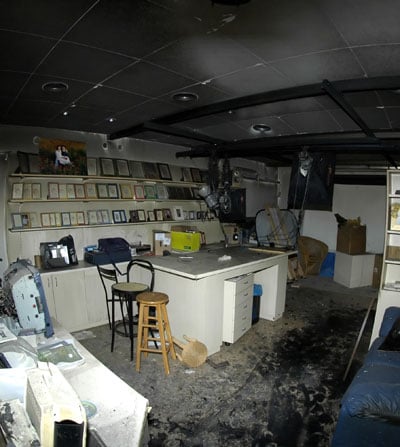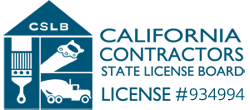
When a fire strikes, the aftermath can be overwhelming. Beyond the immediate dangers, smoke damage lingers, affecting both the home and health. Whether you’re in Los Angeles, Orange County, Riverside County, or Ventura, understanding how to handle smoke damage is crucial. This knowledge not only helps in restoring physical spaces but also contributes to regaining peace of mind.
Smoke damage is a sneaky adversary. Even after the fire is out, tiny smoke particles settle into every nook and cranny, leading to lasting damage. This residual impact can affect paint, upholstery, clothing, and even the air quality in your home. Immediate action is key, as the sooner these issues are addressed, the less permanent the damage will be.
Understanding Smoke Damage
Smoke damage isn’t just about blackened walls and burned items. At its core, it involves the complex chemical reactions from burning materials. When a fire burns, it releases various substances in the form of smoke, which then settle onto surfaces in your home. This settling can lead to different types of damage, depending on the smoke’s characteristics.
There are a few types of smoke damage to be aware of:
- Wet Smoke Damage: This results from slow-burning fires and tends to be sticky and smelly, making it harder to clean.
- Dry Smoke Damage: This is a powdery residue from fast-burning fires, which can leave behind soot that is easier to clean but can seep into porous materials.
- Protein Smoke Damage: Often invisible, it occurs when organic material burns, leaving a strong, lingering odor that can damage paints and varnishes.
These types of smoke act differently and can have immediate and long-term effects on your home. Initially, smoke residues may discolor walls and tarnish metals. Over time, they can cause permanent stains and corrosion if not treated promptly.
While it’s easy to overlook soot-covered surfaces or an unpleasant smell, long-term smoke damage can compromise the very structure of your home. Drywall, carpeting, and woodwork are particularly susceptible if not treated quickly. Overall, understanding the nature of smoke damage is the first step toward effective restoration. By recognizing the signs early and understanding the different types, you can save both time and money in the restoration process, allowing your home to be safely habitable once again.
Health Risks Associated with Smoke Damage
Smoke damage does more than harm your home; it poses a significant threat to your health as well. When smoke settles, it leaves behind tiny particles and residues that can cause respiratory issues. If you start experiencing coughing, wheezing, or difficulty breathing, these might be signs of smoke exposure. Eye irritation is another common symptom due to the chemicals present in smoke, leading to redness and discomfort.
Beyond immediate symptoms, long-term exposure to smoke residues can exacerbate allergies, asthma, and other respiratory conditions. For those with pre-existing health issues, like children, the elderly, or individuals with compromised immune systems, it’s even more urgent to address smoke damage quickly. Ensuring a clean, smoke-free environment helps prevent these health risks. Ignoring smoke damage isn’t just about odors or unsightly stains; it’s about protecting your health and the well-being of those living in your home.
Steps in Professional Smoke Damage Restoration
When facing smoke damage, the first step is a thorough inspection and assessment. Professionals evaluate both the extent of damage and the type of smoke involved. This evaluation guides the cleaning strategy, ensuring it’s right for your specific situation.
Once assessed, the cleaning begins. This includes removing soot from surfaces and washing away residues. The process might involve special vacuums or chemical sponges to remove soot without spreading it further. Air purification becomes crucial in this phase. Specialists use equipment like air scrubbers and ozone machines to neutralize odors and improve air quality.
Deodorization tackles lingering smells. It goes beyond masking and targets the source of odors, ensuring your home smells fresh again. If materials are beyond repair, cutting them out and replacing them is necessary. This may involve removing sections of drywall, carpet, or other materials, ensuring that only clean, undamaged elements remain. These steps, handled by experts, are vital in restoring your home to a safe and comfortable state.
Tips for Homeowners When Dealing with Smoke Damage
When smoke damage occurs, quick action can minimize harm and save precious belongings. Here are some immediate steps you can take:
- Ventilate: Open windows to let fresh air in and smoke out. This helps reduce odors and improve indoor air quality.
- Surface Protection: Cover carpets and furniture with clean sheets or drop cloths to prevent soot from embedding.
- Document Damage: Take photos of damaged areas before any clean-up. These can be useful for insurance claims.
While waiting for professional help, try to limit movement in the house to avoid spreading soot. Avoid cleaning walls or materials yourself, as this can sometimes worsen the damage.
By acting promptly and following these steps, you can protect your home and health until the professionals arrive to take over the more advanced restoration work.
For those dealing with the aftermath of a fire, securing professional help for smoke damage restoration is a crucial step. Addressing the damage quickly can help prevent further complications and ensure your living space is safe and clean. Restoration Masters is here to assist you with comprehensive services that will make your home feel like home again.





